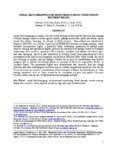Por favor, use este identificador para citar o enlazar este ítem:
http://www.alice.cnptia.embrapa.br/alice/handle/doc/312069Registro completo de metadatos
| Campo DC | Valor | Lengua/Idioma |
|---|---|---|
| dc.contributor.author | OLIVEIRA, Y. M. M. de | pt_BR |
| dc.contributor.author | ROSOT, M. A. D. | pt_BR |
| dc.contributor.author | CIESLA, W. M. | pt_BR |
| dc.contributor.author | JOHNSON, E. | pt_BR |
| dc.contributor.author | RHEA, R. | pt_BR |
| dc.contributor.author | PENTEADO JUNIOR, J. | pt_BR |
| dc.contributor.author | LUZ, N. B. da | pt_BR |
| dc.date.accessioned | 2015-06-16T05:16:41Z | - |
| dc.date.available | 2015-06-16T05:16:41Z | - |
| dc.date.created | 2007-03-28 | pt_BR |
| dc.date.issued | 2005 | pt_BR |
| dc.identifier.citation | In: MONITORING SCIENCE AND TECHNOLOGY SYMPOSIUM, Denver, 2004. Proceedings... Fort Collins: USDA, Forest Service, Rocky Mountain Research Station, 2005. | pt_BR |
| dc.identifier.uri | http://www.alice.cnptia.embrapa.br/alice/handle/doc/312069 | pt_BR |
| dc.description | Aerial sketchmapping is a simple, low cost remote sensing method used for detection and mapping of forest damage caused by biotic agents (insects, pathogens and other pests) and abiotic agents (wind, fire, storms, hurricane, ice storms) in North America. This method was introduced to Brazil in 2001/2002 via a USDA Forest Service/EMBRAPA technical exchange program, which included demonstration flights, a feasibility study, workshops, production of satellite maps, observer training and operational flights, primarily for assessment of damage caused by European wood wasp (Sirex noctilio), monkeys (Cebus nigritus), armillaria root disease (Armillaria spp.), and other damaging agents in pine plantations in Southern Brazil. New applications have been investigated in the most recent campaigns, carried out in 2003 and 2004. These include the use of this technique to monitor land use changes, evaluate the accuracy of classifications from satellite imagery, and to classify successional phases in remnants of Araucaria angustifolia forests in Southern Brazil. The operational flights have demonstrated that clearcuts, land use change detection and other anthropogenic activities may be suitably mapped and monitored from the air. Future activities are aimed at consolidation of this technique in Brazil, the identification of other damage signatures, such as those caused by the eucalyptus red gum lerp psyllid (Glycaspis brimblecombei), and the use of digital aerial sketchmapping methods. | pt_BR |
| dc.format | 1 CD-ROM. | pt_BR |
| dc.language.iso | eng | eng |
| dc.relation.ispartofseries | (Proceedings RMRS-P37CD). | pt_BR |
| dc.rights | openAccess | eng |
| dc.subject | Mapeamento aéreo | pt_BR |
| dc.subject | Monitoramento ambiental | pt_BR |
| dc.subject | Danos | pt_BR |
| dc.subject | Cebus nigritus | pt_BR |
| dc.subject | Armillaria spp | pt_BR |
| dc.subject | Brasil | pt_BR |
| dc.subject | Região Sul | pt_BR |
| dc.title | Aerial sketchmapping for monitoring forest conditions in Southern Brazil. | pt_BR |
| dc.type | Artigo em anais e proceedings | pt_BR |
| dc.date.updated | 2015-06-16T05:16:41Z | pt_BR |
| dc.subject.thesagro | Floresta | pt_BR |
| dc.subject.thesagro | Sensoriamento Remoto | pt_BR |
| dc.subject.thesagro | Sirex Noctilio | pt_BR |
| dc.subject.nalthesaurus | Glycaspis brimblecombei | pt_BR |
| riaa.ainfo.id | 312069 | pt_BR |
| riaa.ainfo.lastupdate | 2015-06-15 | pt_BR |
| Aparece en las colecciones: | Artigo em anais de congresso (CNPF)  | |
Ficheros en este ítem:
| Fichero | Descripción | Tamaño | Formato | |
|---|---|---|---|---|
| YedaMMOliveiraAerialSketch.pdf | 1.34 MB | Adobe PDF |  Visualizar/Abrir |









